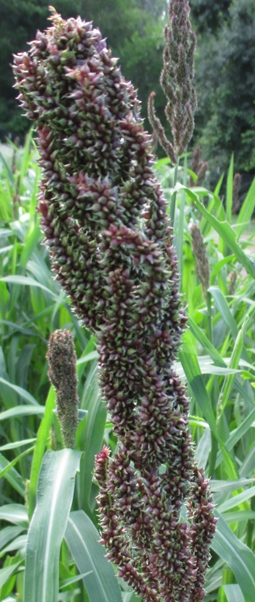
Case6-September-2017
Rainfed farming is the mainstay of over 800 million inhabitants of the Semi-Arid Tropics (SAT). The inhabitants rely on traditionally organised and fragile agricultural systems for livelihood. In India, the rainfed area accounts for 82.75 m ha (58.53 %) of the net sown area of 141.4 m ha. Seven states namely Maharashtra, Rajasthan, Madhya Pradesh, Karnataka, Gujarat, Andhra Pradesh and Tamil Nadu account for 69 % of the total rainfed area of India. In the total agricultural production, about 86% of pulses, 77% of oilseeds, 66% of cotton and 50% of cereals are contributed by rainfed agriculture. Nearly 50% of the total rural workforce and 60% of cattle heads in India are located in these dry districts.

Rainfed farming systems are by nature diverse and house wide varieties of various crops. Rainfed farming is important in terms of agro-biodiversity and its nutrition value. In spite of the various benefits, rainfed farming is on the decline over the years. There are multiple reasons for stagnation in the growth of rainfed agriculture such as inadequate policy, research and investment attention, deteriorating soil health, lack of a commensurate increase in the price of produce with reference to the cost of inputs, inadequate credit supply, and ineffective extension and research.
Over the last four decades, rainfed farming as a livelihood and way of life has been affected and transformed in various ways. Rainfed cropping systems, farming practices and farming families are widely influenced by (i) Globalisation of the economy and socio-cultural features and (ii) Climate change.
Other than the influence of climate change, globalisation has led to
The productivity of rainfed crops has been affected very significantly in the last one to two decades by climate change induced causes such as variation and change in rainfall. A research study conducted in various parts of Tamil Nadu found that there have been many long-term changes in rainfall pattern, which adversely affect rainfed agriculture. Specific rainfall changes documented include the late onset of South West monsoon, decrease in South West monsoon rainfall, early withdrawal of North East monsoon and increase in pre-summer rainfall. The time-tested pattam (optimum seasons) for sowing, particularly the Vaigasi pattam (May-June) and Ani pattam (June-July) are losing their relevance in many parts of the state. The dry spell pattern within the crop period has changed, making the available rainfall less useful to the crops grown.
As a result of these developments, rainfed farmers have moved away from their roots and their functional and cultural links to the immediate ecosystem is fast declining or lost. Desertification and fallowing of lands are on the rise. At the individual level, rainfed farming families, like their other counterparts are undergoing nutrition transition involving (1) Change in food patterns, (2) Triple burden of malnutrition and (3) Increasing incidence of Non-Communicable Diseases and facing food contamination with the entry of a large number of chemicals in food. They are getting deskilled, which increases their dependence on external agencies. As a whole, there has been a significant erosion of farmers’ control over their lives and migration to urban areas is on the rise.
In this context, there is an urgent need for revalorising and rejuvenating rainfed farming through building resilient communities of small rainfed farmers with food, income and ecological securities. To achieve resilient communities of small rainfed farmers, their social, cultural and economic roots have to be strengthened, but with robust development perspective, which avoids the ills of gender, power and social hierarchies. The broader intervention areas for striking at the roots of the problems are:

On these lines, Rainfed Farming Development Program (RFDP) of DHAN Foundation has been working with 22,231 rainfed farming families in 20 locations in six states to improve their individual and collective resilience since 2002. The specific interventions undertaken by RFDP for improving resilience of rainfed farming communities include the following.